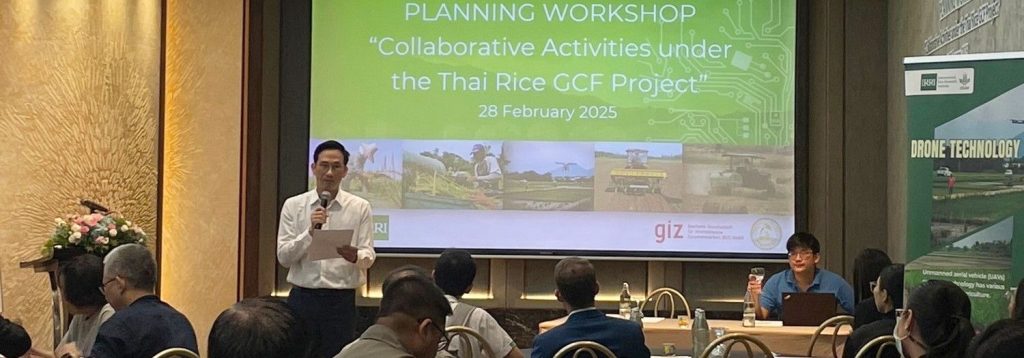Tags
Advancing Climate-Smart Technologies to Strengthening Rice Farming in Thailand

Background
Rice is Thailand’s most important food crop, accounting for roughly half of Thai agricultural land and employing 18 million smallholder farmers. Rice farmers are among the poorest occupational groups in Thailand. They are extremely vulnerable to climate change: rice farming is a water-intensive and temperature-sensitive activity conducted in a climate that is becoming increasingly characterized by longer dry spells and higher temperatures (including temperature spikes).
At the same time, rice farming is a significant contributor to greenhouse gas (GHG) emissions, mainly through methane (CH4) generated in flooded paddy fields but also carbon dioxide (CO2) from agricultural burning practices and nitrous oxide (N2O) from nitrogenous fertilizers. Globally, rice production accounts for approximately 2.5% of total anthropogenic GHG emissions and 10% of agricultural emissions. Thailand is the world’s fourth-largest rice sector methane emitter, accounting for 7% of such emissions.
Rice farmers’ awareness of climate change is high: almost 80% of farmers think that rainfall patterns are changing and that rice yields are suffering as a result. But smallholder farmers have limited capacity to adapt, given their low incomes and small farm sizes, and their limited access to technical assistance, markets, and credit. Furthermore, women smallholder farmers face disproportionate challenges in adapting to climate change, as their needs and roles in agriculture (for example, with regard to technology access) are generally not recognized or addressed.
Aspects of low-emission and/or climate-resilient rice farming have been piloted and selectively rolled-out by baseline projects, but they have not been promoted and disseminated at a large scale nor in an integrated or cross-cutting context.
The switch from conventional to low-emission, climate-resilient rice farming is directly reliant upon the actions of farmers and service providers, and their incentivization through value chain partners and government policies. Farmers and service providers must be motivated and educated to change their practices, and therefore the main barriers are those directly related to adoption of climate-smart production practices. The ‘attractive force’ of a climate-smart rice market can incentivize and motivate farmers to change their practices and impose new requirements on climate-smart services. All sides of the market – farmers, service providers, rice off-takers, traders, buyers, retailers, and consumers – depend upon each other: facilitating change among all of them is necessary to achieve market transformation towards low-emission, climate-resilient rice farming.
Objectives
The project aims to advance climate-smart technologies to strengthen rice farming in Thailand through digital platforms and drone technology.
Specifically, the project aims to deliver the following outcomes:
- Climate-smartfarmers’incomesareincreaseddespiteadverseclimatechange.
- GHGemissionsaresubstantiallyreducedasaresultoffarmers’adoptionof climate-smart rice farming.
- Governmentpoliciesandfundsaregearedtowardsclimate-smartrice.
Published Date: August 1, 2025






